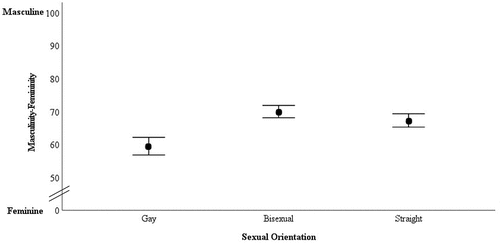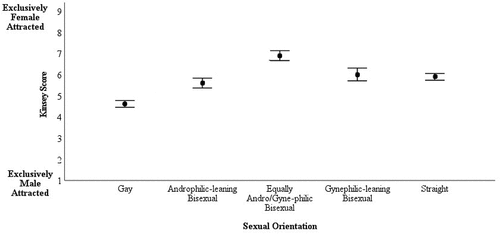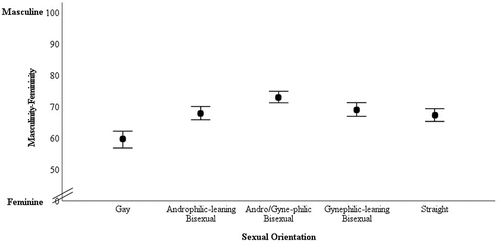Figures & data
Table 1. Summary of participant characteristics.
Figure 1. Illustration of the number of correctly identified gay, bisexual, and straight voices out of 1,400 judgments. The horizontal line indicates the frequency expected due to chance.
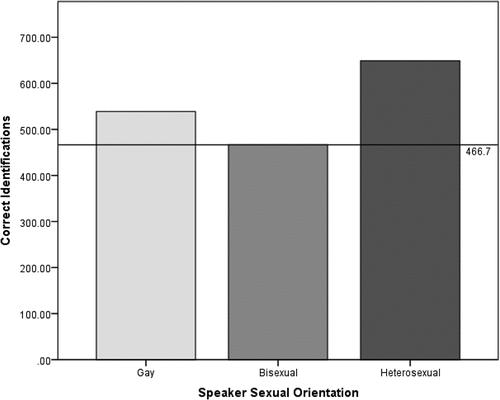
Table 2. Mean proportion (and standard deviations) of correct sexual orientation judgments by sexual orientation of stimulus and distribution of voice ratings.
Figure 2. Mean Kinsey ratings of gay, bisexual, and straight voices. Note due to the within-subjects nature of the design, the 95% CI should be interpreted with caution. See Franz & Loftus (2012) for review.
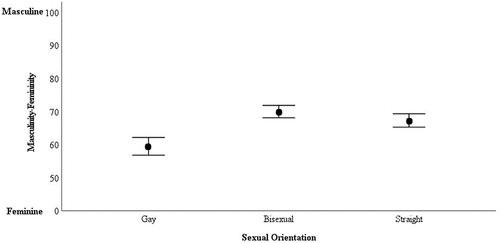
Figure 3. Ratings of femininity-masculinity by sexual orientation of speaker. Note due to the within-subjects nature of the design, the 95% CI should be interpreted with caution. See Franz and Loftus (2012) for review.
